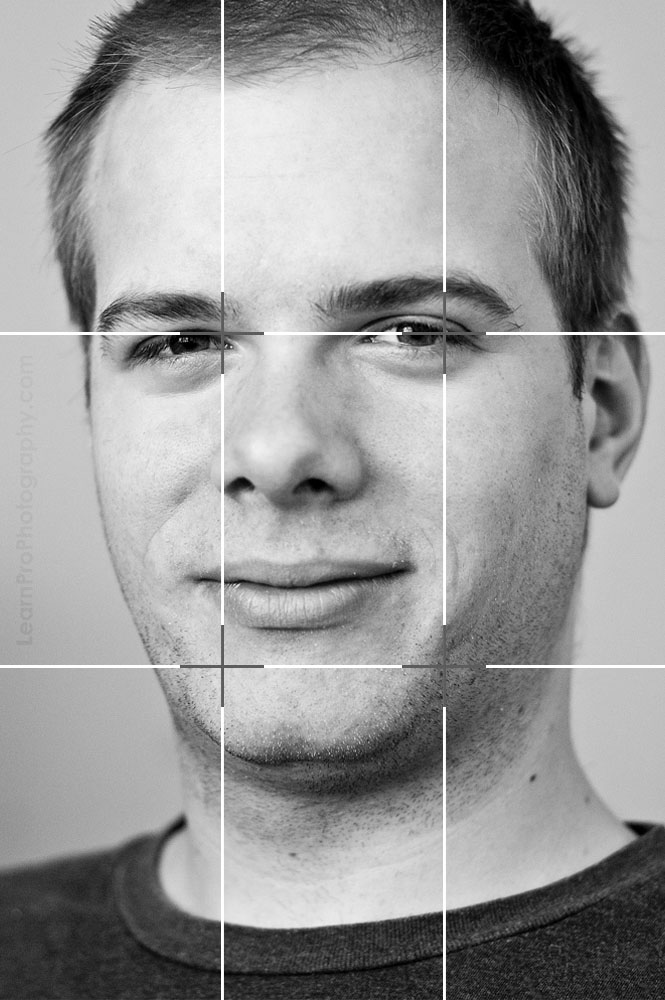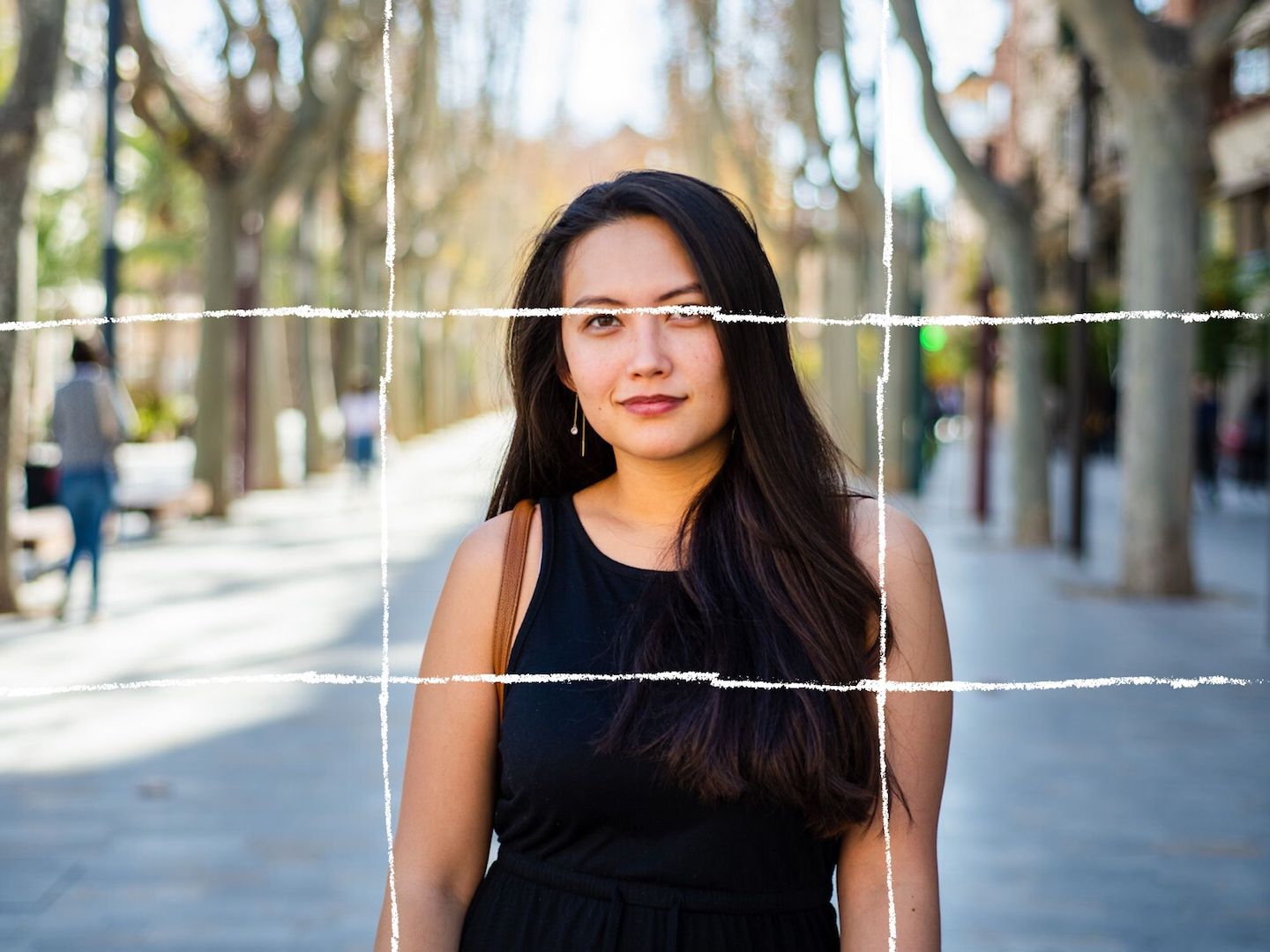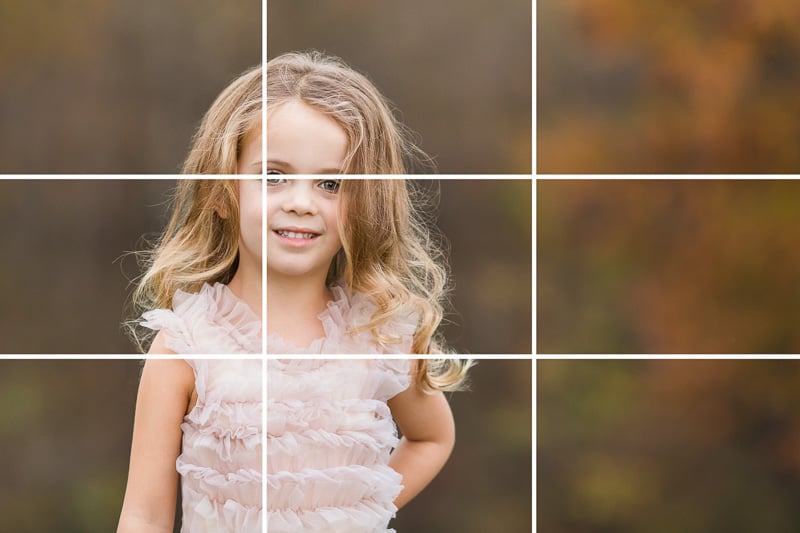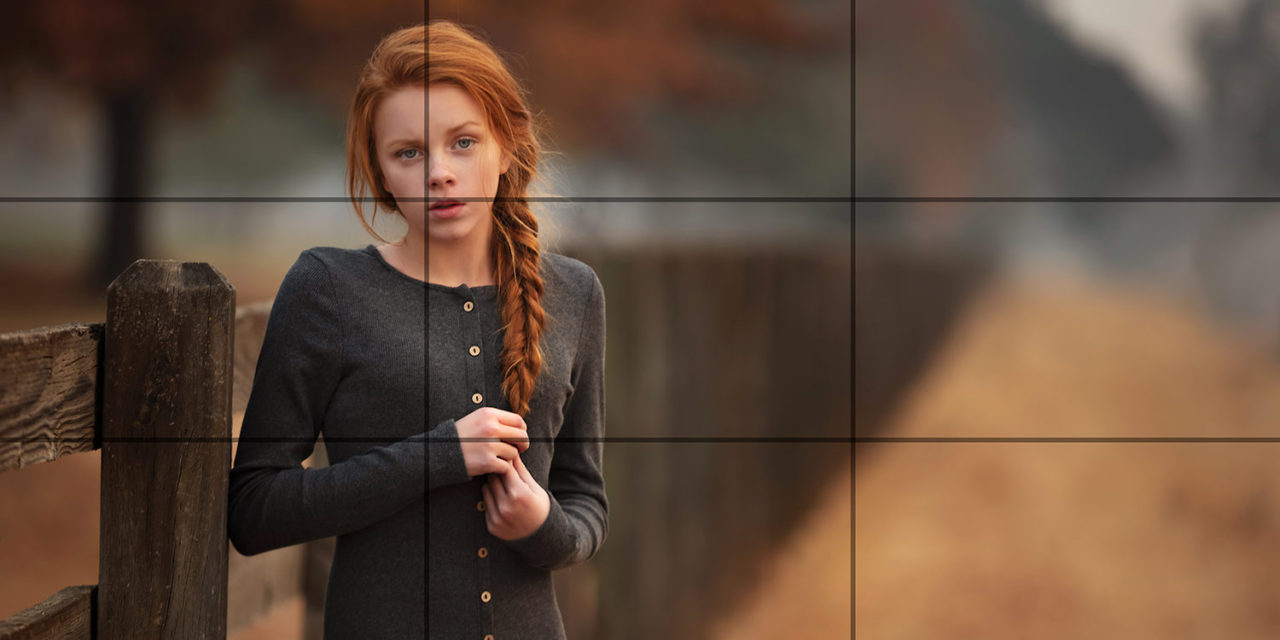While it may be a little over-hyped its still a good guide to follow when applicable to ensure youre not always centering your subjects or centering your landscapes. These lines intersect four times and along these points are where your subjects should be placed.
Portrait photographers usually position the subjects face to align the top horizontal line with their eyes.

. Then with the imaginary 33 grid of 9 segments formed by two horizontal and vertical lines each the images subject is positioned at the intersection of those dividing lines or along with one of the lines itself. Rule of thirds Rules of thirds looks at not placing our subject in the centre otherwise the subject is places on the left or the right of the third Photographers may do this to break the rules of the subject always having to be in the centre of the image. When shooting head focused portraits you will set up your scene so that the eyes of your subject are located in the top third of the frame.
According to the rule by positioning key elements along the. At its most basic the rule of thirds states that placing the key elements on the thirds of a picture is more pleasing to the eye than centering the subject or creating symmetry. 10 Right in Half.
The rule of thirds is one of the most common rules youll hear in photography. When using the rule of thirds there are four. What is the rule of thirds.
The corners of your central square will be the intersections. These lines intersect four times and along these points are where your subjects should be placed. It divides a photo into nine equal parts split by two equally spaced horizontal and vertical lines.
Generally the rule of thirds leads to compelling and well-composed shots. The thirds of an image can be found by dividing an image into nine equal parts with two equally spaced vertical lines and two equally spaced horizontal lines. In photography the rule of thirds is a composition type in which a photo is divided evenly into thirds horizontally and vertically.
By doing so you draw your viewers eyes to one of the intersections in the most natural way. The rule of thirds is an imaginary tic-tac-toe board that is drawn across an image to break it into nine equal squares. The clear focal point of this picture is the models face which is symmetrical and balanced using the rule of thirds.
If you follow the rule your photo will have four intersection points where you can position the subjects face a sunset silhouette or a. A Quick Guide This rule breaks down a photo into a grid with nine equal parts separated by two horizontal and vertical lines. The camera was positioned above the subject at a slight angle to the left.
The rule of thirds breaks an image into nine equal quadrants using two vertical and two horizontal lines as seen in the sample image of the Great Wall of China. And make the eyes the point of interest putting in on the intersection point. In portrait photography the rule of thirds is used to achieve perfect composition by aligning people or their faces with the grid lines.
This rule breaks down a photo into a grid with nine equal parts separated by two horizontal and vertical lines. In this photo the model is fully in focus while looking in the distance above her. Rule of thirds in Portrait shoots In portrait photography the main focus is usually on the subjects face.
The rule of thirds is one of the compositional rulesguidelines that applies to landscape street photography pet photography and portrait photography. What is the Rule of Thirds in Photography. About Press Copyright Contact us Creators Advertise Developers Terms Privacy Policy Safety How YouTube works Test new features Press Copyright Contact us Creators.
By doing so you draw your viewers eyes to one of the intersections in the most natural way. Composing your subject this way helps create a stronger image. The rule of thirds is a compositional guideline that breaks an image down into thirds both horizontally and vertically so you have nine pieces and four gridlines.
Rule of Thirds. Imagine a photo divided into nine equal sections using a set of two equally spaced horizontal and vertical lines. Intersections are critical in a photo because it is.
Rule of Thirds. The most important aspect of composition for portrait photography is the rule of thirds. According to the rule of thirds photography technique the four points of intersection along with these lines will become the points of interest.
In portrait photography the rule of thirds is most often applied to the positioning of the eye line because the eyes are typically the intended focal point of the frame. The lines themselves are the second strongest focal points. 9 Rule of Thirds.
Professional portrait photographers often position the subjects face within the left or right two-thirds of the viewfinder with the subjects eyes along the top horizontal line. You can place the model in the vertical line. The four points where these lines intersect are the strongest focal points.
EOS M5 EF-M55-200mm f45-63 IS. Ricards has placed the. The rule of thirds is a rule in photography that means dividing your photo into three equal lines horizontally and vertically.
As I mentioned already the Rule Of Thirds can be used not only for a portrait shot but also in landscape photography. This rule recommends dividing the image into thirds and placing your subject into one of those sides instead of in the center. The rule of thirds in photography is a guideline that places the subject in the left or right third of an image leaving the other two thirds more open.

Rule Of Thirds 2022 The Definitive Guide With Examples

Rule Of Thirds Definition Examples Learn Pro Photography

The Rule Of Thirds A Simple Way To Improve Your Images Digital Photography Review

The Complete Guide To The Rule Of Thirds In Photography

How To Use The Rule Of Thirds In Photography

Understanding The Rule Of Thirds

Rule Of Thirds In Portrait Photography Composition Guide Bidun Art


0 comments
Post a Comment